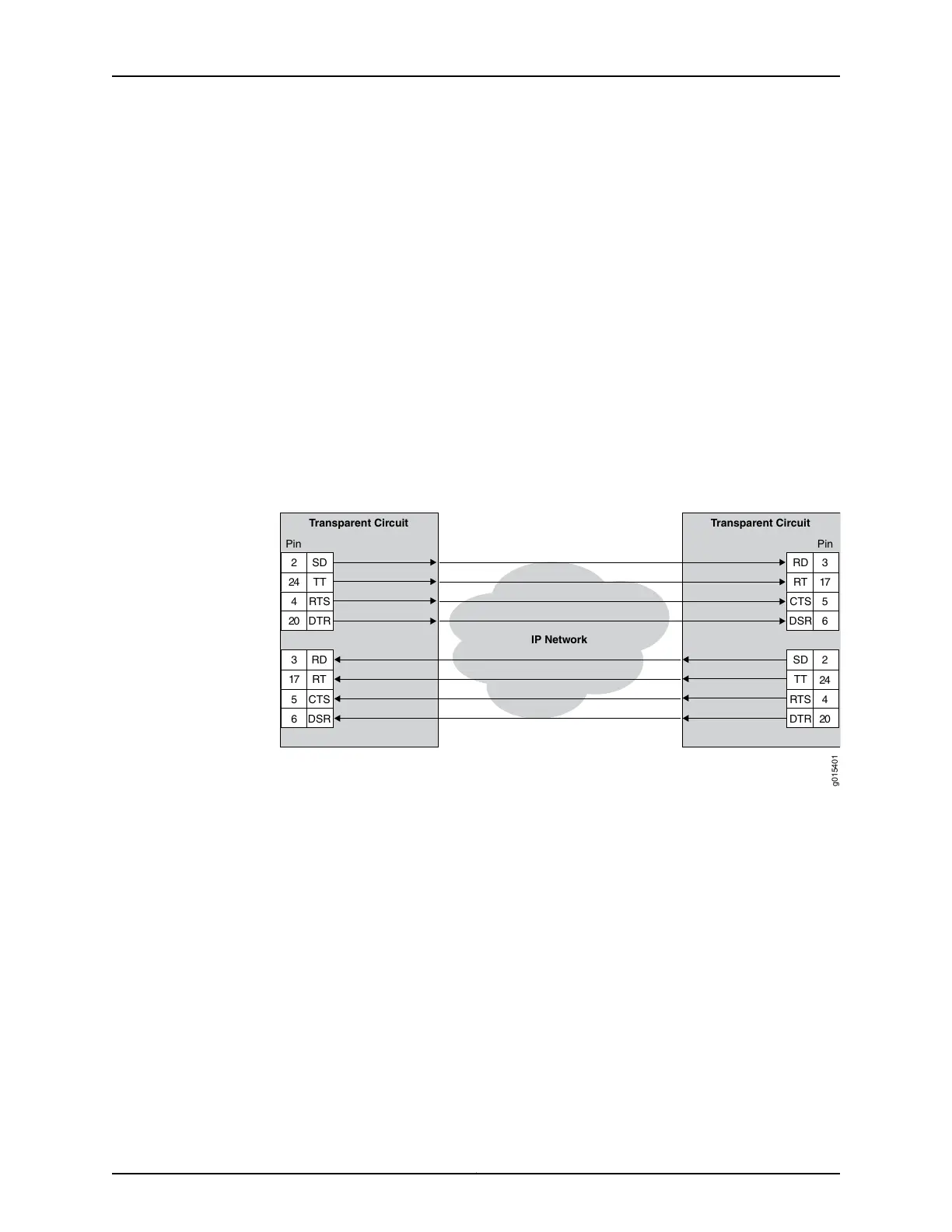• Using Send Timing (ST) Clocking for Higher Speed Circuits with Transparent Encoding
on page 16
• Configuring Transparent Encoding for CTP Bundles (CTP Menu) on page 60
• Configuring Transparent Encoding for CTP Bundles (CTPView) on page 58
How Basic Transparent Encoding Works
There are two modes of transparent encoding. They are Transparent 4 mode (TRANS)
and Transparent 8 mode (TRANS8). Transparent 8 mode is supported only on CTPOS
release 6.4 and later.
Transparent encoding mode 4 samples incoming data on four input signals (SD, TT, RTS,
and DTR), transports these signals across the IP network to the remote end of the circuit,
and sends the signals on four output signals (RD, RT, CTS, and DSR). Figure 3 on page 13
shows a simplified model of a transparent encoded circuit.
Figure 3: Simplified Model of a Transparent Encoded Circuit
IP Network
g015401
RD
RT
CTS
DSR
2
24
4
20
SD
TT
RTS
DTR
3
17
5
6
2
24
4
20
SD
TT
RTS
DTR
3
17
5
6
RD
RT
CTS
DSR
Transparent Circuit
Transparent Circuit
Pin Pin
The signal sampling rate is based on the configured port rate. For example, if the port
rate is 128 Kbps, then the four signals are sampled at 128 KHz, which generates a packet
flow through the IP network of 512 Kbps (4 x 128 KHz). The smallest sampling rate
available is 5.3 μsec (approximately 192 KHz).
To prevent errors in transport, both ends of the circuit must be synchronized with each
other. You can achieve synchronization either by locking each CTP node to a common
reference or by enabling adaptive clocking on one end of the circuit.
Transparent 8 encoding is an extension of Transparent 4 encoding. Compared with
Transparent 4 encoding, which sends four signals in each direction, Transparent 8
encoding doubles the bandwidth and allows eight signals to be sampled and transported.
This allows signals to be sent from additional interfaces that were not supported in
Transparent 4 encoding, although the bandwidth usage will be higher.
13Copyright © 2018, Juniper Networks, Inc.
Chapter 1: Overview of CTP Bundles
